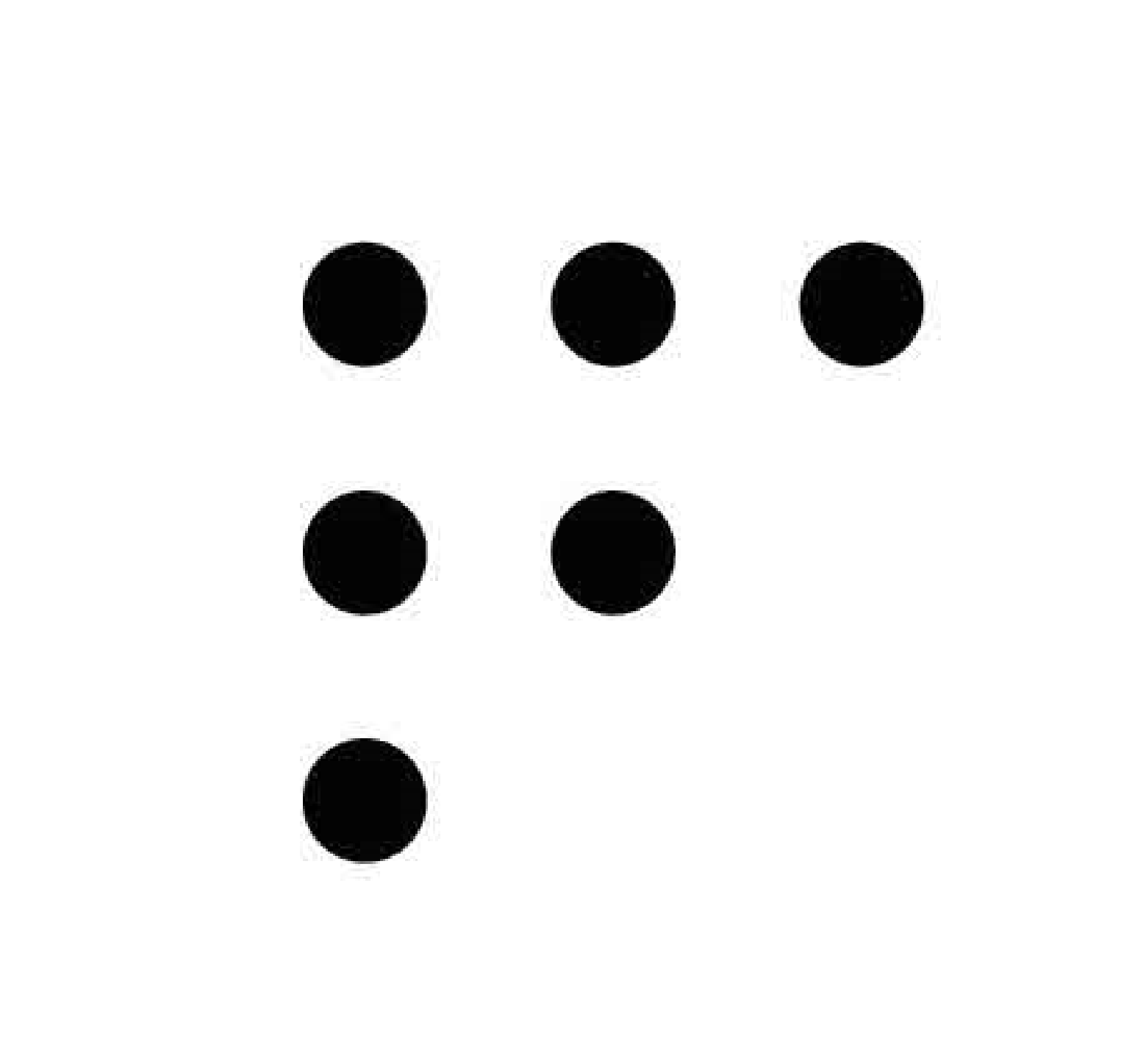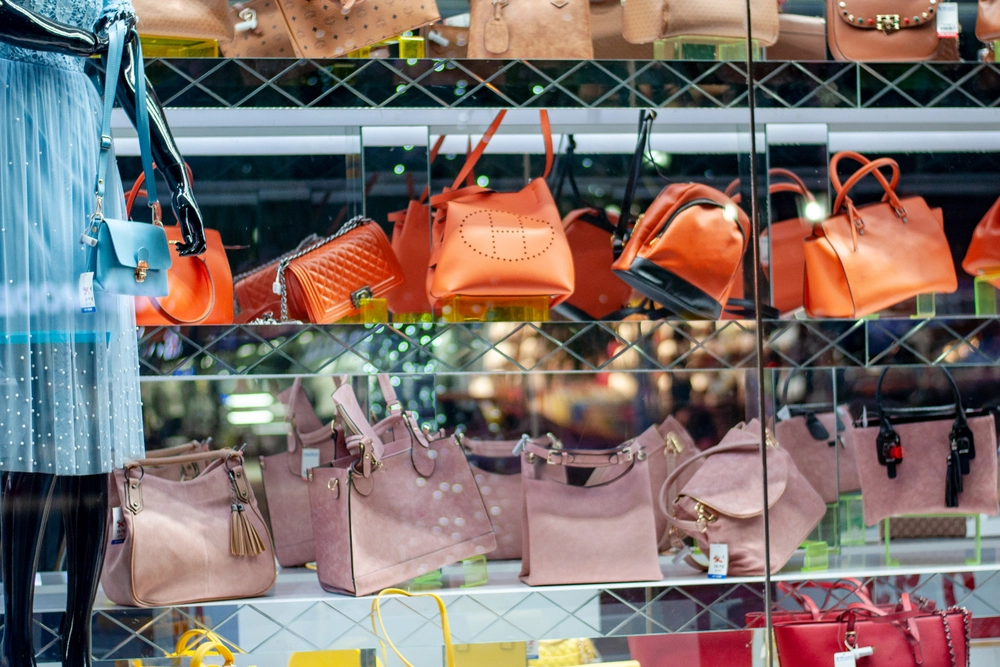Sancon Investments Limited (the “Applicant”) applied to register the logo to the right in class 25 for footwear

UK trade mark oppositions relating to figurative marks only (i.e. with no accompanying words) are relatively uncommon, especially where the trade mark in question does not convey any conceptual meaning. Often it is challenging to give advice on the scope of such rights, as there have been cases where small differences between figurative marks can avoid a finding of confusion.
In a recent UK opposition (case no. O/420/22), the UK Intellectual Property Office compared two figurative marks comprising of 6 "dots" in a particular triangular arrangement. The hearing officer found that the opposition succeeded.
An interesting side issue also arose relating to the use of the earlier "dot" logo with another trade mark incorporating the word "CRAFT". The question was if the use of the earlier registered "dot" logo with the term "CRAFT" was use of the "dot" logo alone. It was important to show use of the earlier "dot" logo within the relevant five-year period, so the Opponent was able to rely on its earlier "dot" logo right in the opposition.
What happened?

Craft of Scandinavia AB (the “Opponent”) opposed application on the basis of its earlier EU trade mark registration (this opposition was filed pre-Brexit) which covers class 25 for goods including footwear.

The Opponent relied on sections 5(2)(b) and 5(3) of the Trade Marks Act 1994. In short, section 5(2)(b) claims a likelihood of confusion between the trade marks and section 5(3) claims a reputation in the earlier mark in which the use of the later mark would take unfair advantage of or be detrimental to the reputation of the earlier mark.
The Opponent's mark had been registered for more than five years so the Opponent was put to proof of use in respect of its mark. As a consequence, the Opponent needed to show use of its mark in order for the opposition to proceed.
The hearing officer found that:
Proof of Use
The Opponent's evidence showed use of the "six dots" mark by itself, as well as in conjunction with the word CRAFT as set out below:

Case law sets out that use of a mark generally encompasses both its independent use and its use as part of a combined mark. Use in combination with an additional matter (i.e. CRAFT, Sportswear or Functional Sportswear) is acceptable use providing that the mark in question (i.e. in this case the 6 "dot" logo) continues to be indicative of the product at issue. The hearing officer considered that the combined CRAFT (and other elements) and "dot" logo constituted use of the registered "dot" logo trade mark. Interestingly, the hearing officer commented that use of the marks in different colours constituted use of the trade mark which was registered in black and white. Use does not need to be quantitively significant in order to constitute genuine use of the trade mark. The turnover figures supplied by the Opponent were provided in regions e.g. "Europe excluding Nordic region" and "Other Nordic countries (excluding Sweden)". The hearing officer found that it seemed reasonable that at least some of the turnover or activity of the Opponent can be attributed to those within the EU and UK. The Opponent had filed evidence showing 5 million (GBK or SEK it is not clear which) of sales in UK stockists and although it was not clear over what period these sales had been amassed and no indication of market share was provided, the hearing officer found that alongside evidence demonstrating use of a co.uk domain name and articles presented for sale in GBP, the evidence provided was found to be sufficient to show genuine use of the mark.
Section 5(2)
When considering s.5(2)(b) (confusing similarity):
- The goods covered by the two marks are identical.
- There is a fairly high degree of visual similarity between the marks as both marks comprise a figurative depiction of "six dots" positioned to create an impression of a triangular shape. Aural and conceptual similarity were not considered, as the marks could not be articulated, nor do they convey any meaning.
- The average consumer of footwear is a member of the general public which would pay a medium degree of attention.
- The Opponent's mark had a medium degree of inherent distinctiveness. However, the hearing officer was not satisfied that the evidence filed was sufficient to make a finding of enhanced distinctiveness.
- The closeness between the marks and the identity of the goods would lead consumers to erroneously believe that the trade mark is that of the Opponent (or vice versa) and there is therefore a likelihood of direct confusion. The opposition under s.5(2)(b) therefore succeeded.
Section 5(3)
- The evidence filed by the Opponent showed only a modest reputation in sportswear at the relevant date, given the market within which the Opponent operates is vast. The hearing officer commented that evidence filed showed a concerted effort by the Opponent to raise awareness of its mark as well as sponsorship deals with high profile athletes and sporting clubs.
- As consumers are likely to be directly confused by the two marks, it follows that a link between the marks would arise in the mind of the public. Therefore, the opposition also succeeded under this ground.
Charlene Nelson, Senior Associate (Chartered Trade Mark Attorney) says: "this case is interesting as it highlights that it is possible to rely on variations of a logo or a mark which incorporates the logo to prove use of the logo to support an opposition. This is important because often brands evolve during their use and are combined with other elements so are not always used in their original form. The decision in the opposition seems to be relatively straightforward given that both marks had the same number of "dots" and were arranged in a similar triangular form."
The decision can be found here: Trade Mark Inter Partes Decision O/420/22 (ipo.gov.uk).
























